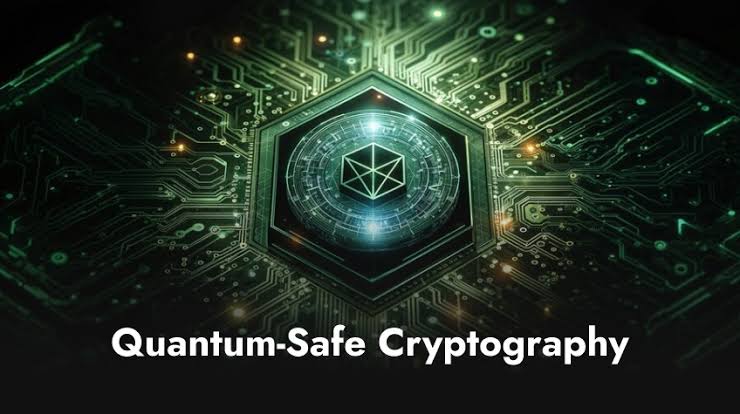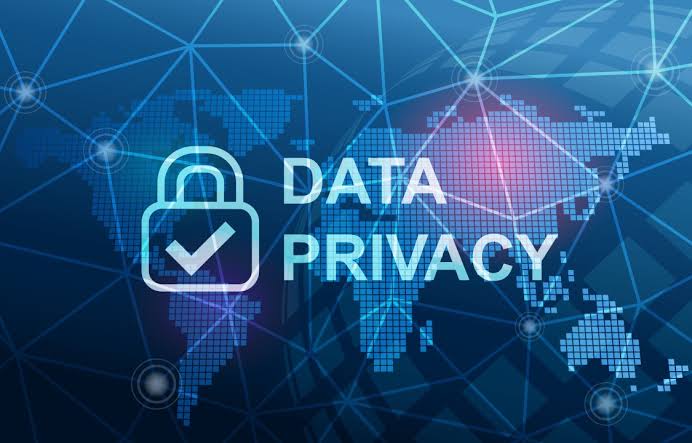
Quantum-safe cryptography development
Quantum-safe cryptography is the next frontier in digital security, designed to withstand the immense computational power of quantum computers. By developing post-quantum algorithms, digital signatures, and hybrid systems, organizations aim to protect sensitive data from future threats.
✨ Raghav Jain

Introduction
In the digital age, cryptography is the backbone of online security. It protects our personal information, financial transactions, and sensitive government or corporate data. But the advent of quantum computing poses a significant threat to traditional cryptographic methods. Quantum computers, with their immense processing power, can potentially break current encryption algorithms, putting digital security at risk.
To address this challenge, quantum-safe cryptography, also known as post-quantum cryptography, is being developed. These new cryptographic techniques are designed to resist attacks from quantum computers while remaining secure against classical computing methods. This article explores the concept, importance, ongoing development, practical implications, and strategies to implement quantum-safe cryptography. Quantum-safe cryptography, also referred to as post-quantum cryptography, represents a transformative advancement in the field of digital security. As the world becomes increasingly dependent on digital communication, cloud computing, and online financial transactions, the need for robust and future-proof security mechanisms is paramount. Traditional cryptographic systems, which have safeguarded sensitive information for decades, rely heavily on the computational difficulty of problems like factoring large integers or computing discrete logarithms. These problems form the basis of widely used protocols such as RSA and Elliptic Curve Cryptography (ECC). While these protocols are currently secure against classical computers, the advent of quantum computing poses a serious threat. Quantum computers operate using principles of quantum mechanics, allowing them to process information in fundamentally different ways from classical computers. A sufficiently powerful quantum computer could efficiently solve mathematical problems that underpin classical cryptography, rendering traditional security methods obsolete. For instance, Shor’s algorithm, developed in 1994, demonstrates that quantum computers can factor large numbers exponentially faster than the best-known classical algorithms, directly threatening RSA and ECC systems. This imminent risk has accelerated research and development in quantum-safe cryptography to ensure that sensitive information remains secure in a post-quantum world.
The development of quantum-safe cryptography focuses on designing cryptographic algorithms that are resistant to attacks by both classical and quantum computers. The approach is not merely about making existing algorithms stronger but about fundamentally rethinking the mathematical foundations of cryptography. Researchers are exploring a variety of algorithmic structures that quantum computers cannot easily compromise. Lattice-based cryptography is one of the most promising directions. It relies on the hardness of lattice problems, such as the Shortest Vector Problem (SVP) and Learning With Errors (LWE), which are currently believed to be resistant to quantum attacks. Lattice-based schemes enable the creation of secure encryption, digital signatures, and key exchange protocols. Another promising area is code-based cryptography, which is grounded in the difficulty of decoding certain error-correcting codes. McEliece encryption, for example, has shown strong resilience against both classical and quantum attacks over decades of analysis. Multivariate polynomial cryptography and hash-based signatures are additional approaches under investigation. Multivariate schemes use systems of polynomial equations over finite fields, which are hard for quantum computers to solve efficiently. Hash-based signature schemes, while older in concept, provide quantum-resilient methods for authentication, leveraging the one-way properties of cryptographic hash functions. These approaches illustrate the diversity and depth of research aimed at creating secure post-quantum cryptographic systems.
The process of standardizing quantum-safe cryptography is a critical aspect of its development. Organizations such as the National Institute of Standards and Technology (NIST) have initiated global competitions to evaluate and endorse cryptographic algorithms capable of resisting quantum threats. NIST’s Post-Quantum Cryptography Standardization Project began in 2016, inviting submissions from cryptographers worldwide to propose algorithms suitable for standardization. This rigorous evaluation considers security, performance, and implementation efficiency. By 2022, NIST had selected several finalist algorithms and continues to work toward formalizing standards that will guide governments, industries, and developers in adopting quantum-safe cryptography. Standardization is essential because widespread security depends not only on robust algorithms but also on consistent implementation across software, hardware, and communication protocols. Without uniform standards, adoption may be fragmented, leaving gaps that could be exploited by adversaries.
One of the significant challenges in quantum-safe cryptography development is balancing security with performance. Many post-quantum algorithms require larger key sizes or generate more computational overhead than classical counterparts. This can impact system efficiency, particularly in resource-constrained environments such as IoT devices or mobile platforms. Lattice-based cryptography, for instance, often demands larger keys and ciphertexts, which could increase bandwidth requirements and storage needs. Researchers are actively working on optimizing these algorithms to reduce computational load while maintaining strong security properties. Hardware acceleration and hybrid cryptographic approaches, which combine classical and quantum-resistant techniques, are also being explored to facilitate practical adoption. The ultimate goal is to implement cryptographic systems that are secure against future quantum threats without compromising current performance standards.
The urgency for quantum-safe cryptography is amplified by the long-term confidentiality requirements of critical data. Even if large-scale quantum computers do not emerge immediately, sensitive information transmitted today may be intercepted and stored by malicious actors for future decryption. This phenomenon, known as “harvest now, decrypt later,” underscores the importance of transitioning to quantum-resistant cryptography proactively. Industries such as banking, healthcare, government, and defense, where data confidentiality is paramount, are particularly vulnerable to quantum threats. Implementing quantum-safe cryptography ensures that information remains protected over decades, preserving privacy and maintaining trust in digital systems. Moreover, as quantum technologies advance, adversaries may increasingly exploit potential weaknesses in current cryptographic infrastructure, making timely adoption essential.
In conclusion, quantum-safe cryptography development represents a proactive and necessary evolution in digital security. By anticipating the capabilities of quantum computers, researchers are creating algorithms designed to withstand the immense computational power that could otherwise compromise classical systems. Lattice-based, code-based, multivariate, and hash-based schemes form the core of this effort, supported by rigorous standardization processes and optimization techniques. The challenge lies not only in designing secure algorithms but also in ensuring they are practical, efficient, and widely adoptable. As quantum computing continues to advance, the development and deployment of quantum-safe cryptography will be critical in safeguarding sensitive information, protecting digital infrastructure, and ensuring the long-term security of global communication networks. The field is dynamic and evolving, reflecting the intersection of cutting-edge mathematics, computer science, and cybersecurity—a testament to human ingenuity in addressing the challenges of a quantum-enabled future.
Understanding Quantum-Safe Cryptography
Quantum-safe cryptography refers to encryption methods that are resistant to attacks by quantum computers. Unlike classical computers, quantum computers leverage quantum bits (qubits), which can exist in multiple states simultaneously. This enables them to solve complex mathematical problems, like factoring large prime numbers or computing discrete logarithms, much faster than classical computers.
Most current encryption systems, such as RSA, ECC (Elliptic Curve Cryptography), and DH (Diffie-Hellman), rely on these hard mathematical problems. Quantum computers can exploit algorithms like Shor’s algorithm to break these encryptions efficiently. Therefore, quantum-safe cryptography focuses on algorithms that quantum computers cannot solve easily.
Why Quantum-Safe Cryptography is Critical
- Future-Proofing Security
- Even if quantum computers are not yet widespread, data encrypted today could be decrypted in the future using quantum attacks. This is particularly critical for sensitive government, military, or financial information that needs long-term confidentiality.
- Protecting Digital Transactions
- With digital banking, e-commerce, and cryptocurrency on the rise, quantum-safe cryptography ensures that online financial transactions remain secure against future threats.
- Safeguarding Personal Data
- Health records, identity information, and private communications rely on encryption. Quantum-safe systems prevent future exploitation of these data by quantum adversaries.
- Maintaining Trust in Communication Networks
- Internet of Things (IoT), cloud services, and communication networks require encryption to maintain integrity and confidentiality. Quantum-safe cryptography ensures these systems remain reliable.
Key Approaches in Quantum-Safe Cryptography Development
- Lattice-Based Cryptography
- Uses complex lattice structures in high-dimensional space
- Resistant to quantum attacks due to the difficulty of solving the shortest vector problem
- Applications: encryption, digital signatures, key exchange
- Hash-Based Cryptography
- Relies on hash functions instead of factoring or discrete logarithms
- Extremely secure for digital signatures
- Examples: XMSS (eXtended Merkle Signature Scheme)
- Code-Based Cryptography
- Uses error-correcting codes for encryption
- Resistant to quantum attacks because decoding random linear codes is hard
- Examples: McEliece cryptosystem
- Multivariate Polynomial Cryptography
- Based on solving multivariate quadratic equations over finite fields
- Quantum-resistant due to problem complexity
- Applications: secure digital signatures
- Isogeny-Based Cryptography
- Leverages mathematical structures called elliptic curve isogenies
- Promises small key sizes while maintaining quantum resistance
- Applications: secure key exchange
Current Development and Research
- NIST Post-Quantum Cryptography Standardization
- The National Institute of Standards and Technology (NIST) is leading a global effort to standardize quantum-resistant algorithms
- Process involves evaluating candidate algorithms for security, performance, and scalability
- Aims to release standards for public and private sector adoption
- Global Industry Initiatives
- Tech giants like Google, IBM, and Microsoft are testing quantum-safe algorithms in experimental networks
- Financial institutions are exploring hybrid encryption models to combine classical and quantum-safe methods
- Academic Research
- Universities worldwide are focusing on mathematical foundations and performance optimization
- Research emphasizes creating algorithms that are both secure against quantum attacks and efficient for real-world applications
- Hybrid Cryptography
- Combines classical and quantum-safe algorithms
- Provides gradual migration paths without immediate disruption
- Ensures data remains secure during the transition period
Practical Implementation Tips
- Assess Vulnerabilities
- Identify sensitive data that requires long-term protection and could be at risk from future quantum attacks.
- Adopt Hybrid Solutions
- Use hybrid encryption methods combining classical and quantum-resistant algorithms to maintain backward compatibility.
- Upgrade Key Management
- Transition to key sizes and algorithms compatible with post-quantum standards. Automate key rotation for enhanced security.
- Stay Informed on Standards
- Monitor updates from NIST and other regulatory bodies to align with standardized quantum-safe algorithms.
- Test in Non-Critical Environments
- Before full-scale deployment, experiment with quantum-safe algorithms in sandboxed networks to measure performance and reliability.
- Educate Teams
- Train cybersecurity professionals and developers on quantum-safe practices, algorithm selection, and implementation strategies.
Daily Practices for Organizations Preparing for Quantum Threats
- Conduct risk assessments for sensitive digital assets
- Begin hybrid encryption deployment for critical systems
- Maintain backups using quantum-resistant storage methods
- Regularly update software and firmware for encryption modules
- Review cryptographic protocols for potential vulnerabilities
Common Challenges in Quantum-Safe Cryptography Development
- Performance Overhead
- Some quantum-safe algorithms require larger key sizes or more computation, affecting system efficiency.
- Standardization Delays
- While NIST is progressing, full global adoption may take years, creating uncertainty for organizations.
- Integration Complexity
- Existing systems may need major redesigns to accommodate new cryptographic protocols.
- Lack of Awareness
- Many organizations underestimate quantum threats or delay action until quantum computers become mainstream.
Myths About Quantum-Safe Cryptography: Busted!
“Quantum computers are too far in the future, no need to worry now.”
→ False. Data encrypted today could be decrypted in the future once quantum computers mature.
“All post-quantum algorithms are slow and inefficient.”
→ Not true. Research focuses on balancing quantum resistance with performance. Hybrid solutions offer practical efficiency.
“Switching to quantum-safe encryption will break current systems.”
→ Partially true. Transition requires planning, but hybrid deployment ensures smooth migration.
“Quantum-safe cryptography is only for large organizations.”
→ Wrong. Small businesses, healthcare, and personal data holders also benefit from early adoption.
Sample Steps for Individuals and Small Organizations
Step 1: Identify sensitive digital data that could remain valuable for decades.
Step 2: Use encrypted cloud services that experiment with post-quantum algorithms.
Step 3: Enable hybrid encryption in communication apps or data transfer protocols where possible.
Step 4: Regularly update software and security patches.
Step 5: Stay informed about NIST standards and implement recommended algorithms as they become available.
Conclusion
The development of quantum-safe cryptography marks a critical step in securing our digital future. Quantum computing brings incredible possibilities, but it also threatens current encryption systems that protect our personal, financial, and governmental data. By investing in research, adopting hybrid encryption, and preparing for post-quantum standards, individuals and organizations can future-proof their digital assets.
Quantum-safe cryptography is not just a theoretical concept—it’s an essential part of responsible digital security. Early awareness, gradual implementation, and continued monitoring can ensure your data remains secure, even as quantum computing evolves.
Start preparing today. Encrypt wisely. Educate your teams. Protect your data.
The quantum revolution is coming—and your cryptography must be ready.
Q&A Section
Q1:- What is Quantum-Safe Cryptography?
Ans :- Quantum-safe cryptography refers to encryption methods designed to resist attacks from quantum computers, ensuring that sensitive data remains secure even when quantum computational power becomes widespread.
Q2:- Why is traditional cryptography vulnerable to quantum computing?
Ans :- Algorithms like RSA and ECC rely on mathematical problems that quantum computers can solve efficiently, potentially breaking current encryption and exposing sensitive information.
Q3:- What are the main approaches to quantum-safe cryptography?
Ans :- Post-quantum algorithms include lattice-based, hash-based, code-based, and multivariate cryptography, each designed to resist quantum attacks while maintaining performance.
Q4:- How is lattice-based cryptography used in practice?
Ans :- Lattice-based methods rely on complex geometric problems that remain hard for quantum computers, enabling secure key exchange, digital signatures, and encryption for sensitive data.
Q5:- What role do digital signatures play in quantum-safe cryptography?
Ans :- Quantum-resistant digital signatures ensure the authenticity and integrity of messages, preventing impersonation or tampering even under quantum threats.
Q6:- How are organizations preparing for a post-quantum world?
Ans :- Companies and governments are testing post-quantum algorithms, updating security protocols, and collaborating on standards to future-proof sensitive communications.
Q7:- What challenges exist in implementing quantum-safe cryptography?
Ans :- Challenges include performance overhead, integration with existing systems, standardization, and ensuring interoperability across diverse networks and devices.
Q8:- How does hybrid cryptography work in quantum-safe solutions?
Ans :- Hybrid cryptography combines classical and post-quantum algorithms, providing security against current and future quantum threats while easing the transition.
Q9:- What is the significance of NIST’s post-quantum cryptography standardization?
Ans :- NIST’s process identifies, evaluates, and recommends quantum-resistant algorithms, providing a global framework for secure deployment in the coming decades.
Q10:- How will quantum-safe cryptography impact everyday users?
Ans :- Users will benefit from continued secure banking, messaging, cloud storage, and online transactions, maintaining privacy despite the rise of quantum computing.
Similar Articles
Find more relatable content in similar Articles

Data privacy regulations (GDPR..
Data privacy regulations such.. Read More

The Role of Robotics in Streng..
Robotics plays a vital role i.. Read More

Rising Cyber Crimes: Latest T..
Cyber crimes are rapidly grow.. Read More

The Future of Cybersecurity: A..
The future of cybersecurity i.. Read More
Explore Other Categories
Explore many different categories of articles ranging from Gadgets to Security
Smart Devices, Gear & Innovations
Discover in-depth reviews, hands-on experiences, and expert insights on the newest gadgets—from smartphones to smartwatches, headphones, wearables, and everything in between. Stay ahead with the latest in tech gear
Apps That Power Your World
Explore essential mobile and desktop applications across all platforms. From productivity boosters to creative tools, we cover updates, recommendations, and how-tos to make your digital life easier and more efficient.
Tomorrow's Technology, Today's Insights
Dive into the world of emerging technologies, AI breakthroughs, space tech, robotics, and innovations shaping the future. Stay informed on what's next in the evolution of science and technology.
Protecting You in a Digital Age
Learn how to secure your data, protect your privacy, and understand the latest in online threats. We break down complex cybersecurity topics into practical advice for everyday users and professionals alike.
© 2025 Copyrights by rTechnology. All Rights Reserved.